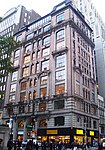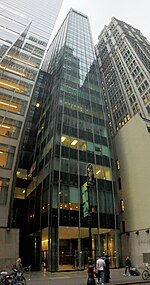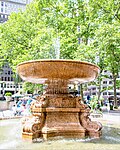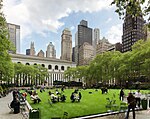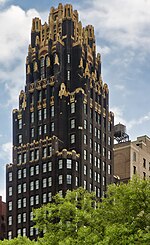Hotel Royal fire
The Hotel Royal fire occurred on February 7, 1892, at the Hotel Royal in New York City, killing 28 people. The fire began in the hotel's elevator shaft, where the night engineer was performing maintenance work by the light of a candle. The candle's flame either ignited a gas leak in the shaft, or it caught a dry tinder such as dust and was then flamed by the strong winds blowing through the shaft. A coroner's jury assigned no fault for the fire and made no recommendations for safety improvements; however, legislation was introduced in the New York State Assembly that sought to tighten the building code in light of the fire as well as the 1891 Park Place disaster.
Excerpt from the Wikipedia article Hotel Royal fire (License: CC BY-SA 3.0, Authors).Hotel Royal fire
West 40th Street, New York Manhattan
Geographical coordinates (GPS) Address Nearby Places Show on map
Geographical coordinates (GPS)
| Latitude | Longitude |
|---|---|
| N 40.753388888889 ° | E -73.984861111111 ° |
Address
Pax
West 40th Street
10018 New York, Manhattan
New York, United States
Open on Google Maps
